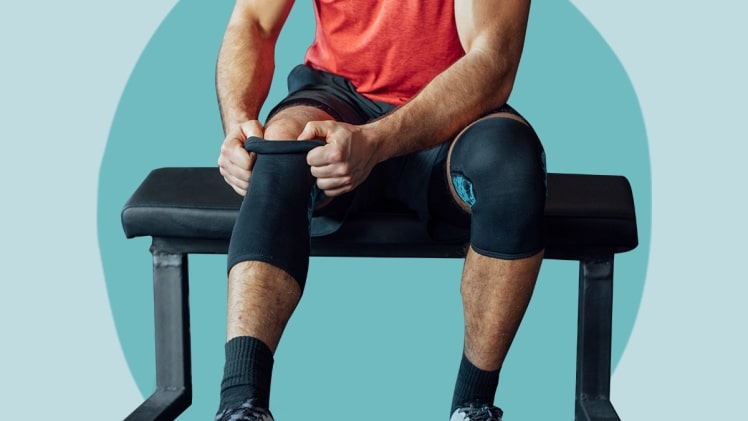Osteoarthritis (OA) refers to a group of over 100 diseases that involve joint inflammation, in which joints become inflamed, causing pain, discomfort, and stiffness. A frequent assumption is that arthritis only affects adults; however, it also affects children and teenagers.
Knees, hips, wrists, and ankles are some of the most common joints afflicted by arthritis, and inflammation in these areas makes movement more difficult for some people. While there is no cure for osteoarthritis, fortunately, there are a variety of treatments available to relieve arthritis pain and help you stay more active.
When you’re first diagnosed with arthritis, your doctor will most likely suggest nonsurgical treatments to help you feel better. Such cornerstones of treatment include exercise, physical therapy, pain medicines, steroid injections, and supportive braces if you wish! More specifically, this article will focus on the potential benefits of support braces as a treatment for osteoarthritis.
What are the Benefits of Wearing Support Braces?
Wearing a support brace as a treatment for OA has several advantages, including:
-
Relive pain and suffering
Sporting knee brace, ankle & back braces are designed to move weight away from the injured area of the joint.
-
Reduced swelling
Some support braces provide compression, which can help persons with arthritis lessen the swelling that occurs after physical exercise.
-
Reduced pressure
If the joints behind your kneecap or ankle bone weaken, a sporting knee brace or sporting ankle brace with a cutaway region can assist relieve pressure and discomfort while supporting the surrounding areas.
-
Increased confidence
Wearing a brace and knowing you have extra support can help you complete daily tasks more confidently.
What Sorts of Braces Are Effective for Osteoarthritis?
OA braces can be manufactured of various materials, including plastic, metal, and other similar components. Synthetic rubber, foam, or other soft materials may be used to cushion them. Braces for OA can be found in pharmacies, medical supply stores, and online sites.
There are several braces available, and not all of them are suited for people with OA. The four major types are as follows:
- Prophylactic braces prevent you from harm when you are participating in sports.
- Functional or supportive braces are for individuals who have previously injured a joint.
- Rehabilitative braces restrict joint movement to allow for recovery. They’re most utilised following surgery or when a joint has settled.
Since they relieve pressure on crucial places, unloader or offloaded braces are the most common type used by persons with arthritis of the knee. Functional and unloader braces are the most popular forms of OA braces.
Braces are also different depending on whatever area of the body has to be supported:
-
Ankle Braces
The American Academy of Orthopaedic Surgeons (AAOS) suggests a lace-up sporting ankle brace to treat mild to severe foot and ankle discomfort. The AAOS, on the other hand, recommends a custom-made leather or plastic ankle brace if you have moderate to severe pain.
-
Back
Back and spinal disc arthritis can be alleviated by wearing a back support brace or corsets. Corsets are usually adjustable and constructed of a stretchy fabric. Metal mouldings and more formed braces are common. For example, a brace may be more beneficial than a corset if you have an OA-related vertebral fracture.
-
Knees
Because knee OA is one of the most frequent types of arthritis, various brace options are available. Custom sporting knee braces are also available; however, they are more expensive.
What Are the Drawbacks of Wearing a Brace to Treat Your Condition?
A brace isn’t necessary for everyone with OA, as the success of a support brace is often determined by the areas of instability and damage produced by OA.
For example, if you have damage to the medial compartment of your knee, a sporting knee brace can help by providing more support to your outer knee. However, if you have more significant damage done to your knee like if your anterior collateral ligament is torn or injured, you’ll almost certainly need surgery to stabilise your knee, not a brace.
In addition, according to several scientific reviews’ most braces have a minimal effect because many users stop wearing the brace after a short period as they didn’t get the brace properly sized and so don’t wear them; this is due to a variety of reasons, including:
- Discomfort: The extra weight could make you feel bulky and heavy.
- Skin breakdown might occur as a result of adjusting to a brace.
- Swelling: While braces can help prevent swelling, some people may have swelling as a side effect.
How to Choose the Best-Fitting Braces
- Comfort: A brace should be comfortable to wear for long periods during exercise or sporting activities.
- Lightweight Design: a brace should neither be heavy nor bulky, for the best results users can source a custom-fit brace which is tailored to your specific leg measurements and further alleviates discomfort. The greatest knee braces are so comfortable that they improve your mobility and feel like an extension of your leg that you won’t even notice it’s there.
- Avoid using generic sizing methods or braces that don’t have a wide range of sizes. For example, if you’re in the middle of a size, the brace will most likely not fit properly, resulting in an uncomfortable tight or loose fit around the joint.
A properly sized, medical knee brace will assist you in improving your proprioception. Because of the pain in your knee, it’s normal to lose strength in that knee and rely on the other, putting more strain on that knee.
You will feel more confident and steady loading your knee and strengthening the surrounding muscles by squeezing the surrounding muscles of your injured knee at a medical-grade. Most importantly, make sure you get the right support brace for your situation by speaking to a reputable supplier.

